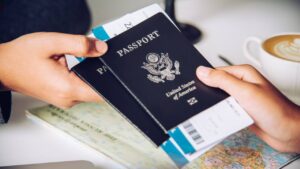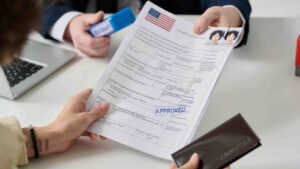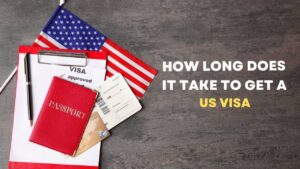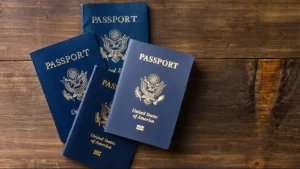US Entry Requirements travelers must meet, including document verification, biometric screening, and customs checks conducted at immigration. It highlights what officials inspect to ensure lawful and secure entry into the United States.
Traveling to the United States demands careful adherence to a range of legal and procedural steps designed to uphold border security and verify lawful entry. Understanding the US Entry Requirements helps every traveler avoid unexpected delays, complications, or outright denial at the border. The entry process involves far more than simply presenting a valid visa or travel authorization; it includes thorough document verification, biometric data collection, health screenings, and customs declarations.
This article offers an exhaustive explanation of what travelers can expect at immigration checkpoints in 2025, so they can prepare accordingly and enjoy a smooth entry experience.
Overview of US Entry Requirements in 2025
In 2025, the United States enforces updated US Entry Requirements that incorporate advances in technology, health protocols, and global security concerns. These requirements apply equally to all travelers, regardless of nationality or the purpose of their visit. From the moment travelers book their flights to the moment they pass through the immigration line, U.S. Customs and Border Protection (CBP) officers meticulously review documents, identities, and travel intentions. Importantly, possessing a valid visa or ESTA approval does not guarantee entry—CBP officers retain full discretion to grant or deny admission based on their assessment.
CBP officers expect transparency and honesty throughout the inspection process. Any inconsistency or attempt to conceal facts may trigger secondary inspections or even refusal of entry. Officers often ask about travel plans, financial means, and personal ties to the traveler’s home country to evaluate the risk of overstaying or unauthorized employment. By combining biometric technologies such as facial recognition and fingerprint scans with in-person interviews, the U.S. strengthens its border security while aiming to facilitate lawful entry.
Essential Passport and Visa Requirements for US Entry
Valid Passport Requirements
The first and most critical step for entry into the United States is presenting a valid passport. The U.S. government requires passports that meet strict standards, preferably e-passports embedded with electronic chips storing biometric information. Most travelers must hold passports valid for at least six months beyond their planned departure date, although exemptions exist for citizens of some countries due to reciprocal agreements.
CBP officers also scrutinize the physical condition of passports. Worn-out, damaged, or tampered passports may lead to entry denial. It is essential to remember that every traveler, including minors and infants, must possess their own passport, as group or family passports are no longer acceptable. Travelers should renew or replace passports well before expiration to prevent issues at the border.
Visa and ESTA Authorizations
Travelers must determine whether they require a visa or if they qualify for the Visa Waiver Program (VWP). The VWP permits citizens of specific countries to enter the U.S. for up to 90 days for tourism or business without a visa. Travelers from VWP countries must obtain an approved ESTA (Electronic System for Travel Authorization) before departure. The ESTA process involves submitting personal and travel details online, and approval is valid for two years or until the passport expires.
Despite ESTA approval, CBP officers still have the final authority to admit or deny entry. For travelers from countries outside the VWP, securing the appropriate visa at a U.S. embassy or consulate is mandatory. The visa application process often includes interviews and submission of supporting documents that demonstrate the traveler’s eligibility and intent. It is critical that the visa type matches the traveler’s purpose of visit because discrepancies during immigration interviews can result in denial.
Detailed Immigration Checks at the US Border
Identity Verification Procedures
Upon arrival, CBP officers begin with identity verification, ensuring travelers match the identification documents they present. Officers use a combination of manual checks and advanced biometric technology. Facial recognition software compares travelers’ live images to biometric photos stored on electronic passports, while fingerprint scans are checked against multiple databases. These biometric checks, mandatory for all non-U.S. citizens, efficiently confirm identities and flag any criminal or immigration violations. This system minimizes human error and accelerates processing while bolstering border security by linking travelers to watchlists or past infractions if applicable.
Personal Interview with CBP Officer
After biometric verification, officers conduct personal interviews with travelers to assess their intentions and admissibility. The officers ask detailed questions about the traveler’s purpose, itinerary, financial situation, length of stay, and contacts within the U.S. These interviews aim to detect any inconsistencies or signs of unauthorized activity, such as plans to work illegally or overstay the permitted duration.
Officers also observe the traveler’s demeanor and consistency in responses. Confidence and honesty during the interview help facilitate smoother processing. Conversely, nervous or evasive behavior may prompt secondary inspection, leading to more extensive questioning and delays.
Document Review and Verification
CBP officers review additional supporting documents travelers present, including return or onward flight tickets, hotel bookings, invitation letters, and proof of financial means such as bank statements or pay slips. These documents help confirm that travelers have concrete plans and sufficient resources to support themselves without resorting to unauthorized work or public assistance.
Officers also cross-reference travelers’ names and histories against immigration and criminal databases to identify previous overstays, deportations, or violations. Attempting to present forged or fraudulent documents is a serious offense, often resulting in detention, criminal charges, or a permanent ban. Hence, travelers must always carry truthful, original, and verifiable documents.
Health and Vaccination Requirements for Entry
Although many COVID-19 restrictions have eased, certain health-related US Entry Requirements persist to safeguard public health. For example, travelers arriving from countries experiencing outbreaks of diseases like yellow fever must present valid vaccination certificates upon arrival.
Certain immigrant and nonimmigrant visa applicants must complete medical examinations and submit health records to U.S. Citizenship and Immigration Services (USCIS) during their visa application. While tourists and short-term visitors generally do not need to show proof of COVID-19 vaccination in 2025, travelers should verify requirements with their airline and destination, as some states or institutions maintain independent vaccine mandates.
At ports of entry, health screenings remain in place, and travelers exhibiting symptoms of contagious diseases may undergo quarantine or further medical evaluation. Carrying updated vaccination records, including travel-specific immunizations, is strongly advised to prevent entry delays or refusals.
Proof of Financial Means and Accommodation
Demonstrating sufficient financial means is an important part of US Entry Requirements. CBP officers often request evidence of funds such as recent bank statements, employer letters, or sponsorship affidavits from U.S. contacts to verify that travelers can support themselves during their stay.
Providing proof of accommodation also reassures officials that travelers have planned their visit thoroughly and secured stable lodging. Travelers should bring hotel confirmations, rental agreements, or invitation letters from U.S. residents with detailed address and contact information. Insufficient or vague accommodation plans may raise concerns that the traveler intends to remain unlawfully or become homeless.
Customs Declarations and Baggage Inspections
After clearing immigration, travelers proceed to customs, where they must declare items they bring into the U.S. using the Customs Declaration Form (CBP Form 6059B). Travelers can submit this form electronically through apps like Mobile Passport Control or CBP One or in paper form at the airport.
Customs officers have the authority to inspect luggage via x-rays or manual searches to enforce regulations and prevent prohibited items from entering the country. Travelers must declare all agricultural products, large amounts of currency (over $10,000), commercial goods, and other restricted items. Failure to declare goods accurately can lead to fines, confiscation, or criminal prosecution. Understanding prohibited items such as certain foods, plants, and animal products helps travelers comply and avoid penalties.
Security Screening and Background Checks
In addition to physical inspections, travelers undergo thorough security screenings using databases maintained by DHS, FBI, and other agencies. These databases track immigration violations, criminal records, watchlists, and suspected terrorist connections.
This screening happens alongside the immigration interview and often goes unnoticed by travelers unless alerts or matches arise. Those flagged may face additional questioning or secondary inspections to assess their risk. These measures help prevent the entry of inadmissible or dangerous individuals into the U.S.
Electronic Device Checks and Privacy Considerations
CBP officers increasingly inspect electronic devices like smartphones, tablets, and laptops. They may request travelers to unlock devices or provide passwords and review stored data such as photos, messages, emails, and social media accounts to verify travel intentions or security risks.
Not all travelers face these checks, but individuals from certain countries or those flagged during screening are more likely to be targeted. Refusing to cooperate can result in device confiscation or further questioning. Travelers should back up sensitive data and consider digital privacy measures before traveling.
Secondary Inspection and What to Expect
If officers have doubts about admissibility, travelers may be sent to secondary inspection, a separate area for more detailed reviews. Here, officers conduct longer interviews, examine documents thoroughly, perform additional background checks, and may inspect luggage again.
Secondary inspections do not necessarily imply wrongdoing but can be time-consuming and stressful, lasting several hours. Remaining patient, cooperative, and respectful usually speeds the process. If cleared, travelers receive an entry stamp; if denied, they must return to their origin.
Entry Procedures for US Citizens and Permanent Residents
U.S. citizens must present valid U.S. passports for identity verification upon re-entry. Dual nationals are required to use their U.S. passports to avoid complications. Permanent residents must present their green cards along with valid foreign passports. Those who have been abroad for extended periods might require re-entry permits to maintain residency status.
CBP officers check green card holders for any violations that could affect their status. Ensuring all documents are current before travel avoids unnecessary issues upon return.
Understanding these comprehensive US Entry Requirements and the detailed immigration checks at U.S. borders helps travelers prepare fully and enter the country without avoidable difficulties. Staying informed and honest throughout the process is the best strategy for a smooth, secure, and successful U.S. entry experience.
FAQs
1. Do I need a visa to enter the United States?
If you’re not a U.S. citizen or permanent resident, then yes—you either need a visa or an approved ESTA (Electronic System for Travel Authorization) if you’re from a Visa Waiver Program (VWP) country. Your entry type depends on your nationality and the purpose of your visit.
2. What is the ESTA and who can apply for it?
ESTA is a travel authorization for citizens of 40+ countries under the Visa Waiver Program. You can use it for tourism or business visits of up to 90 days. Apply online before traveling, and ensure your passport is an electronic one with a biometric chip.
3. How long must my passport be valid to enter the U.S.?
Your passport should be valid for at least six months beyond your planned stay in the U.S., unless your country has a special agreement exempting this rule. Always renew early if your passport is close to expiring.
4. What documents should I carry when entering the U.S.?
Carry your valid passport, visa or ESTA, return ticket, proof of accommodation, financial documents, and any supporting paperwork (like a letter of invitation or employment verification). These help prove your purpose and ability to support your stay.
5. Do U.S. immigration officers ask questions at entry?
Yes. CBP officers typically ask about your trip’s purpose, where you’re staying, your job, and how long you plan to stay. They assess your credibility and intent to ensure you meet the terms of your visa or ESTA.
6. Can I be denied entry even with a valid visa or ESTA?
Yes. A visa or ESTA only allows you to travel to a U.S. port of entry. The final decision lies with the CBP officer who reviews your case at the airport or border. If they suspect any discrepancy or risk, they may deny entry.
7. What happens during biometric screening at the airport?
CBP officers take your fingerprints and a facial scan to confirm your identity. These checks help match you against watchlists and ensure you haven’t violated any past immigration laws.
8. Are there any health or vaccination requirements?
While COVID-19 vaccine requirements have largely been lifted, travelers from countries with outbreaks of diseases like yellow fever must show vaccination proof. Some visa applicants must also complete a medical exam as part of the approval process.
9. Do immigration officers check my phone or electronic devices?
Yes, they can. Officers may ask you to unlock phones, laptops, or tablets to inspect messages, social media, or files. This helps them confirm your travel purpose or identify possible red flags. Refusing access could delay or block entry.
10. What is secondary inspection and why might I be sent there?
If CBP officers need more time to verify your documents or intentions, they’ll send you to secondary inspection. It’s a deeper review involving additional questions, document checks, and sometimes baggage searches. It’s routine in many cases, so stay calm and cooperative.






